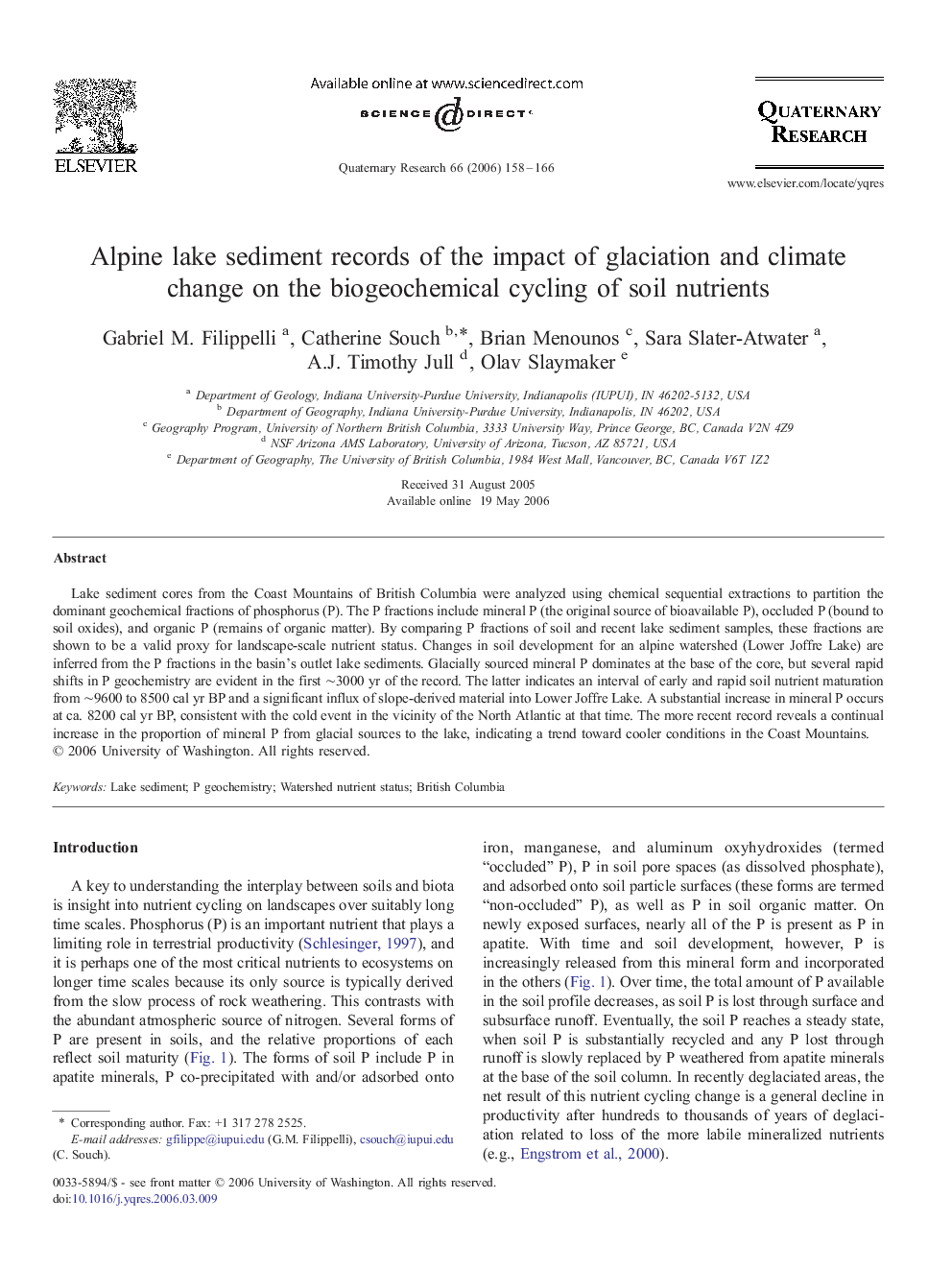| Article ID | Journal | Published Year | Pages | File Type |
|---|---|---|---|---|
| 1046124 | Quaternary Research | 2006 | 9 Pages |
Abstract
Lake sediment cores from the Coast Mountains of British Columbia were analyzed using chemical sequential extractions to partition the dominant geochemical fractions of phosphorus (P). The P fractions include mineral P (the original source of bioavailable P), occluded P (bound to soil oxides), and organic P (remains of organic matter). By comparing P fractions of soil and recent lake sediment samples, these fractions are shown to be a valid proxy for landscape-scale nutrient status. Changes in soil development for an alpine watershed (Lower Joffre Lake) are inferred from the P fractions in the basin's outlet lake sediments. Glacially sourced mineral P dominates at the base of the core, but several rapid shifts in P geochemistry are evident in the first â¼3000 yr of the record. The latter indicates an interval of early and rapid soil nutrient maturation from â¼9600 to 8500Â cal yr BP and a significant influx of slope-derived material into Lower Joffre Lake. A substantial increase in mineral P occurs at ca. 8200Â cal yr BP, consistent with the cold event in the vicinity of the North Atlantic at that time. The more recent record reveals a continual increase in the proportion of mineral P from glacial sources to the lake, indicating a trend toward cooler conditions in the Coast Mountains.
Keywords
Related Topics
Physical Sciences and Engineering
Earth and Planetary Sciences
Geology
Authors
Gabriel M. Filippelli, Catherine Souch, Brian Menounos, Sara Slater-Atwater, A.J. Timothy Jull, Olav Slaymaker,
